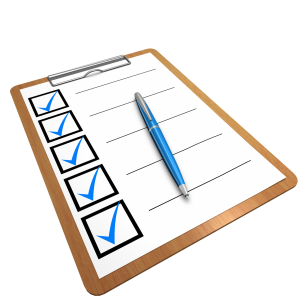Edit and Review
30 How to Copy Edit
Copy editors add an important element to the creation or revision of a textbook. When they copy edit, these individuals provide an objective set of eyes that ensures grammar and spelling are correct, the established style for a textbook is followed (see Appendix 2: Style Guide), and the book’s language is suitable and understandable to the readers. Skipping this stage lowers the quality of the textbook.
It is recommended that trained copy editors be used for this phase. An author should never copy edit their own work. BCcampus Open Education used both independent copy editors and editors from an author’s university or college. It was interesting to observe how the copy editors’ work influenced textbook writing and production. For example, because a copy editor is not the subject-matter expert, they read a textbook like a student might, and quickly notice when information is missing or concepts are unclear. However, unlike a student, a copy editor has the skill to help an author rewrite a passage. Authors were happy to receive this feedback because they learned to present their material more effectively.
Make a plan
Like is done for other parts of your textbook’s timeline, it is important to clearly spell out the expectations for and schedule of the copy editor before this work begins. While the copy editor brings essential expertise to the writing process, it is the author-publisher’s or project coordinator’s responsibility to guide that expertise. (See Project Timeline.)

Here are some items that should be addressed.
- Determine who will be the copy editor’s key contact. If someone other than the author-publisher is coordinating the project, then allow the copy editor to communicate with this individual.
- Clarify which style guide and other editing/styling references will be used by the copy editor. Instruct that a style sheet should be created and maintained; review the details of this document with the copy editor. (See Create a Style Sheet and Appendix 2: Style Guide.)
- If an authoring platform or software is being used, allow the copy editor to make grammatical, spelling, and styling changes directly in the system to save time. Trust the copy editor’s authority in this area. If the copy editor notices problems with styling that are difficult to fix, or repeat throughout the book, assign the correction to someone other than the author, such as the fixer. (See Fix as You Go.)
- If the copy editor is new to the technology being used, provide training. (See Technology: Accounts and Training.)
- Develop a copy-editing schedule. At BCcampus, we learned that copy editing chapters as they are completed is most effective. This tactic saves time for both the author and production team because problems are identified and corrected early.
- Define the copy editor’s role. For example, you might require that the copy editor check all grammar and spelling, in addition to scanning text for overall consistency, clarity, and style. If assessing content for accuracy and integrity will be the responsibility of the subject-matter expert, inform the copy editor. Include these points in the copy editor’s contract. (See Peer Review and Appendix 4: Contracts.)
- Determine which sections and elements of the textbook should be copy edited. Careful copy editing is time consuming (and potentially expensive) so if there are items that will be reviewed by other parties, tell your copy editor. Consider assigning the following to one of your support team members:
- in-text citations and the accompanying reference list
- figure and table captions
- non-Canadian spellings often cannot be corrected in text that is part of an image, graph, chart, or other figure taken from an external resource. Therefore, if spelling is important, use Canadian repositories when possible.
- figure and table numbering (are they in sequential order, consistent, and complete?)
- attribution statements (are they present for all resources? Is the format correct?)
- check links and fix those that are dead or open on the wrong web page
- archived web pages found in the Internet Archive: Wayback Machine can be used for dead links
- If the textbook is an adaptation of an existing book, decide if the unchanged original text and other elements of the book should be copy edited in addition to the new/changed text by the adapting author. This might be done:
- even if the original text has been copy edited to ensure that the new/changed text is consistent with the adapted work
- if the original text was not copy edited or poorly copy edited
- Ask the copy editor to keep a list of items that should be reviewed by the author such as:
- text that requires a significant rewrite
- subject-related questions
Authors should not make changes to textbook chapters once they have been copy edited as this can undo the copy editor’s work.
Attributions
Checklist has been designated to the public domain (CC0).

